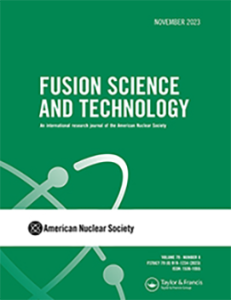
Modeling the Tokamak Exhaust Processing System in a Commercial Simulator for Process Monitoring Purposes
Author(s)
Eduardo Iraola, José M. Nougués, Lluís Batet, Josep A. Feliu, Luis Sedano
Magazine:
2023, Fusion Science and Technology
Abstract/Summary
Tritium represents a hazard due to its radioactivity and migration properties. Because of these difficulties, ITER, the largest fusion experiment so far, relies on a conservative static procedure to monitor the tritium inventory. Future commercial fusion plants can avoid operation halts if a dynamic monitoring strategy proves itself valid. Tritium plant models have been developed for this kind of monitoring and analysis task, but sensor accuracy and reliability are an issue still to be addressed, and the path to dynamic monitoring remains unclear. The present work shows the modeling procedure of the Tokamak Exhaust Processing System in a commercial simulator, Aspen HYSYS, to reproduce the inventories, streams, process conditions, and compositions of this subsystem during operation. A demonstration of such a tritium plant subsystem shows meaningful value for several reasons. First, this process has not been modeled before in commercial dynamic simulators, which are typically used in the process industry. It will also allow new stakeholders to participate in future fusion-related projects. Second, it will play a key role in industry-like tritium process monitoring, in which the new model will act as a digital twin of the plant. Data-driven diagnostics can be fueled by model data, helping engineers to generate additional data that could otherwise be expensive to get directly from the plant. For these reasons, models will represent an essential part of a dynamic monitoring system, necessary for feasible fusion projects.


